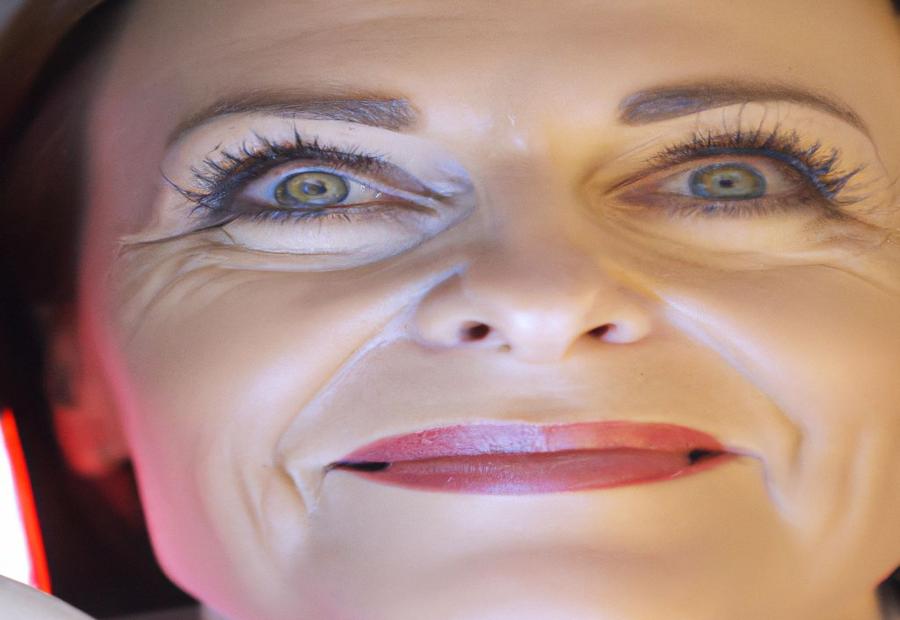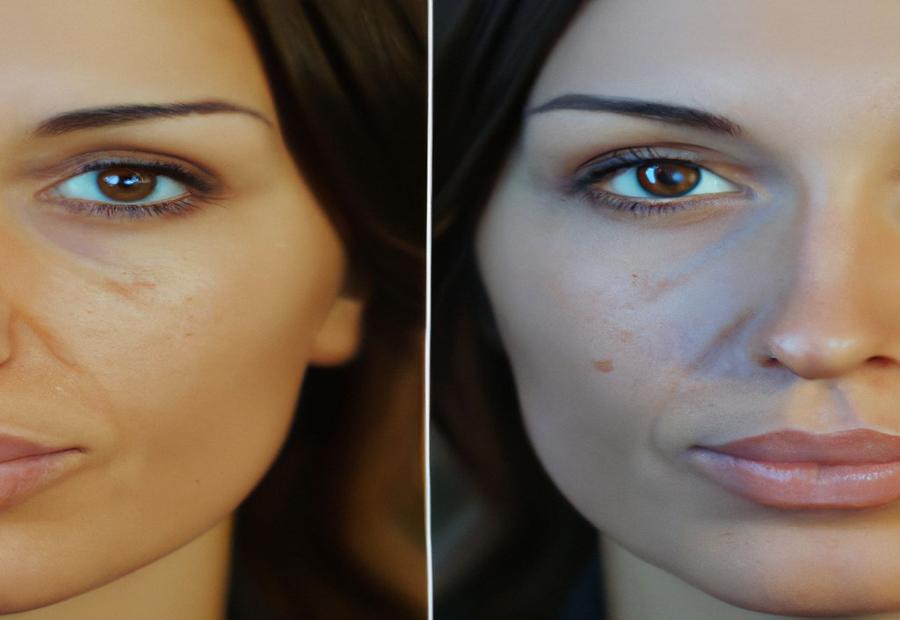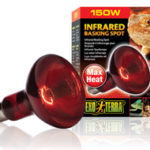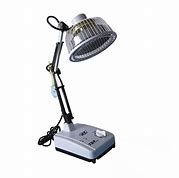Last Updated on 10 months by Francis
.jpg)
Ultherapy and Kybella are two popular cosmetic treatments that address different concerns. It is important to understand their differences and benefits to determine which treatment is most suitable for your needs.
Ultherapy is a non-invasive procedure that uses ultrasound technology to stimulate collagen production and lift and tighten the skin. On the other hand, Kybella is an injectable treatment specifically designed to target and reduce submental fat, commonly known as a double chin.
The ideal candidates for Ultherapy are individuals who have mild to moderate skin laxity and want to improve the appearance of sagging skin on the face, neck, and chest. Kybella, on the other hand, is recommended for individuals who have unwanted fat deposits under the chin and want a more defined jawline.
The procedures for Ultherapy and Kybella differ significantly. Ultherapy involves the use of ultrasound energy, which is delivered to the targeted areas, while Kybella involves a series of injectable treatments using a synthetic form of deoxycholic acid to dissolve fat cells.
When it comes to results, Ultherapy gradually improves the skin’s elasticity and firmness over time, with optimal results visible within a few months. Kybella, on the other hand, requires multiple treatments, but results in a noticeable reduction in submental fat and an improved jawline contour.
Both Ultherapy and Kybella carry potential side effects and risks. Ultherapy may cause temporary redness, swelling, tingling, or tenderness in the treated area. Kybella may lead to temporary swelling, bruising, numbness, or hardness in the treatment area.
The cost of Ultherapy and Kybella varies depending on factors such as the treatment area, the number of sessions required, and the provider’s fees. Generally, Ultherapy tends to be more expensive than Kybella.
Ultimately, the choice between Ultherapy and Kybella will depend on your specific concerns, desired outcomes, and consultation with a qualified medical professional. They can assess your needs and recommend the best treatment option for you to achieve your desired results.
Contents
Key takeaway:
- Ultherapy and Kybella are non-surgical cosmetic treatments that target different concerns: Ultherapy uses ultrasound energy to lift and tighten the skin, while Kybella is an injectable that reduces submental fat (double chin).
- Ultherapy is ideal for individuals with mild to moderate skin laxity who want a non-invasive treatment, while Kybella is suitable for those with excess fat under the chin who desire a non-surgical option.
- The procedures for Ultherapy and Kybella differ: Ultherapy involves delivering focused ultrasound energy to stimulate collagen production, while Kybella involves injecting synthetic deoxycholic acid to destroy fat cells. Both procedures require multiple sessions for optimal results.
What is Ultherapy?
Ultherapy is a non-invasive cosmetic procedure that uses ultrasound technology to tighten and lift the skin on the face, neck, and décolletage. What is Ultherapy? It stimulates collagen production deep within the skin, resulting in a more youthful appearance. Ultherapy is FDA-approved and safe, with no downtime or recovery period required.
In a true story, Sarah was feeling self-conscious about the sagging skin on her neck and jawline. She wanted a solution that didn’t involve surgery or needles. After researching her options, she discovered ultherapy. Excited by the possibility of achieving a firmer and more lifted look without undergoing invasive procedures, Sarah decided to give it a try. She went in for her ultherapy session and was pleasantly surprised by how comfortable and quick the treatment was. Over the next few months, Sarah noticed a gradual improvement in the tightness and smoothness of her skin. She felt more confident and was happy with the natural-looking results of ultherapy. Thanks to ultherapy, Sarah was able to achieve the rejuvenated appearance she desired without any major disruption to her daily life.
What is Kybella?
Kybella is an FDA-approved injectable treatment used for reducing submental fat, commonly known as a double chin. It contains deoxycholic acid, a naturally occurring substance in the body that aids in the breakdown and absorption of dietary fat. By injecting Kybella into the fat beneath the chin, it destroys fat cells, resulting in a more defined and contoured jawline.
The treatment process involves multiple injections administered over a series of sessions. The exact number of sessions needed varies depending on individual circumstances. Most people require between two to four treatments, with each session spaced about one month apart.
Kybella offers a non-surgical alternative to invasive procedures like liposuction and neck lift surgery. It is a safe and effective solution for individuals who have excess fat in the submental area and wish to achieve a more sculpted appearance.
When considering Kybella as a treatment option, it is important to consult with a qualified healthcare professional who can evaluate your specific needs and determine if you are a suitable candidate. They will provide personalized recommendations based on your goals and expectations.
With proper consultation and treatment, Kybella can help individuals achieve a more defined jawline and improved facial profile, boosting their confidence and overall appearance.
How do Ultherapy and Kybella differ?
How do Ultherapy and Kybella differ? Both Ultherapy and Kybella offer different methods of addressing cosmetic concerns.
Skin tightening vs. fat reduction: Ultherapy is a non-invasive procedure that utilizes ultrasound technology to naturally lift and tighten the skin on the face, neck, and chest. In contrast, Kybella is an injectable treatment specifically designed to target and eliminate fat cells beneath the chin.
Treatment area: Ultherapy primarily focuses on skin tightening in various areas, including the forehead, eyebrows, jowls, and neck. On the other hand, Kybella is specifically formulated to address submental fat, commonly referred to as a double chin.
Procedure method: Ultherapy utilizes ultrasound waves to stimulate collagen production and enhance skin tightness. It is a non-surgical procedure that doesn’t require any incisions. Conversely, Kybella involves a series of injections directly into the fat cells beneath the chin to effectively destroy them.
Downtime and recovery: Ultherapy has minimal downtime, allowing patients to resume their regular activities immediately following the procedure. However, Kybella may lead to a few days of swelling and bruising, and some patients may require multiple treatment sessions for optimal results.
Results: Ultherapy results are typically progressive, with a gradual tightening and lifting of the skin observed over 2-3 months. Similarly, Kybella results take time, as fat reduction becomes noticeable after a few weeks, as the body naturally eliminates the destroyed fat cells.
Who are the Ideal Candidates for Ultherapy?

Photo Credits: Infraredforhealth.Com by Tyler Thomas
Ultherapy is an ideal treatment option for individuals who are experiencing mild to moderate skin laxity and want a non-surgical solution. Patients who are in their 30s to 50s typically see the best results with this procedure. It is especially effective for those with sagging skin on the face, neck, and décolletage. Candidates for Ultherapy should have realistic expectations and understand that it is not a substitute for a facelift or surgery. It is a great option for those looking for a more natural, gradual improvement in their skin’s appearance. The procedure is safe for all skin types and can be tailored to each individual’s specific needs. It is important to consult with a qualified and experienced provider to determine if you are an ideal candidate for Ultherapy. Who are the Ideal Candidates for Ultherapy?
Who are the Ideal Candidates for Kybella?

Photo Credits: Infraredforhealth.Com by Dylan Wright
The ideal candidates for Kybella are individuals who have excess fat beneath their chin, commonly referred to as a “double chin.” Kybella is a non-surgical treatment that can help improve the appearance of submental fat. Here is a list of ideal candidates for Kybella:
- Adults who have unwanted fullness or fat deposits beneath the chin
- Individuals with good skin elasticity, as Kybella is designed to reduce fat, not tighten loose skin
- People who are in good overall health and have realistic expectations for the results
- Patients who desire a non-invasive treatment option instead of surgical procedures like liposuction
- Those who have a stable weight, as significant weight gain or loss after Kybella treatments may affect the results
It’s important to consult with a qualified healthcare professional to determine if you are an appropriate candidate for Kybella. They will assess your specific situation, medical history, and goals to determine if Kybella is the right treatment for you.
Procedure and Treatment Process
Looking to understand the procedure and treatment process of Ultherapy and Kybella? Let’s dive into it! In the upcoming sections, we’ll explore the ins and outs of Ultherapy and Kybella procedures. From the steps involved to the expected results, we’ve got you covered. So, whether you’re curious about non-invasive skin tightening with Ultherapy or the targeted fat reduction with Kybella, we’ll break down the key details you need to know. Let’s get started!
Ultherapy Procedure
The Ultherapy Procedure is a non-surgical treatment for skin tightening and lifting. It uses ultrasound energy to stimulate the production of collagen, which helps to improve the elasticity and firmness of the skin.
During the Ultherapy Procedure, a trained healthcare provider will use an ultrasound device to deliver heat energy to specific layers of the skin. This energy stimulates the production of collagen, resulting in a tighter and more lifted appearance.
The Ultherapy Procedure is typically performed on the face, neck, and chest areas. It is a non-invasive treatment that does not require any incisions or downtime.
While individual experiences may vary, many patients report minimal discomfort during the Ultherapy Procedure.
The length of the Ultherapy Procedure will depend on the treatment area, but it is generally completed within one to two hours.
After the Ultherapy Procedure, some patients may experience mild redness, swelling, or tingling sensations. These effects are temporary and usually subside within a few hours.
Results from the Ultherapy Procedure can be seen gradually over time as collagen production continues to improve the skin’s appearance.
It is recommended to follow a skincare routine and maintain a healthy lifestyle to maximize the longevity of the results.
When considering the Ultherapy Procedure, it is important to consult with a qualified healthcare provider who can assess your individual suitability.
They will evaluate your skin condition, medical history, and aesthetic goals to determine if the Ultherapy Procedure is the right procedure for you.
It is also important to discuss any potential risks or side effects associated with the Ultherapy Procedure.
Kybella Procedure
The Kybella procedure, also known as the Kybella treatment, is a non-surgical approach to reducing the appearance of submental fullness, commonly referred to as a double chin. This FDA-approved injectable consists of a synthetic form of deoxycholic acid, which is naturally present in the body and aids in the breakdown and absorption of fat cells.
During the Kybella procedure, a skilled healthcare professional will administer multiple small injections beneath the chin. The number of injections and the quantity of Kybella utilized will vary according to each individual’s specific needs and desired outcomes. These injections effectively target and eliminate fat cells, steadily improving the contour of the chin and creating a more well-defined jawline.
It is crucial to emphasize that the Kybella procedure should only be performed by a qualified and experienced healthcare provider to ensure both safety and optimal results. While mild to moderate swelling and bruising may occur after the treatment, these temporary side effects typically subside within a few days to a week.
For the best possible outcome and to determine if the Kybella procedure is suitable for your case, it is strongly recommended to consult with a healthcare professional. They will assess your individual needs and offer personalized recommendations to assist you in achieving your aesthetic goals.
Results and Effectiveness

Photo Credits: Infraredforhealth.Com by Charles Jackson
Looking to achieve impressive results and effectiveness? Look no further! In this section, we’ll dig into the remarkable outcomes of two popular treatments: Ultherapy and Kybella.
Join us as we explore the Ultherapy results that defy gravity and discover the transformative power of Kybella results. Get ready to be amazed by the tangible benefits backed by proven facts and the experiences of those who’ve tried these innovative procedures.
Ultherapy Results
Ultherapy delivers noticeable and long-lasting results in skin tightening and lifting. The treatment utilizes focused ultrasound energy to stimulate collagen production, resulting in firmer and more youthful-looking skin.
Ultherapy results can vary based on individual factors such as age, skin condition, and treatment area. However, many patients experience a significant improvement in skin tightness and a reduction in fine lines and wrinkles.
According to studies, after an Ultherapy treatment, patients typically see around a 16% increase in skin tightening compared to baseline measurements. This improvement continues to enhance over the following months, with optimal results visible around three to six months after the procedure.
It’s important to note that individual results may vary, and multiple treatment sessions may be recommended for more significant and long-lasting outcomes.
Fun fact: Ultherapy is the only non-invasive procedure cleared by the FDA for lifting the skin on the neck, chin, and brow.
Kybella Results
Kybella is known for its effectiveness in producing significant Kybella results by reducing submental fat, also known as a double chin. Clinical trials have shown that Kybella can lead to significant improvements in the appearance of submental fullness, with many patients achieving a more defined jawline and a more youthful profile. One study found that 79% of participants treated with Kybella had at least a one-grade improvement in their submental fullness based on a clinician assessment scale.
Long-lasting effects: The results of Kybella treatments are considered long-lasting because the treatment permanently destroys fat cells in the targeted area. Once these fat cells are destroyed, they cannot accumulate or store fat again. This means that the reduction in submental fullness achieved with Kybella can be maintained with proper lifestyle and weight management.
Number of treatments: The number of Kybella treatments needed to achieve optimal Kybella results can vary depending on the individual. On average, most patients require two to four treatment sessions spaced about four to six weeks apart. However, some individuals may need additional treatments to achieve their desired outcome.
Downtime and recovery: After receiving Kybella injections, patients may experience swelling, bruising, and discomfort in the treated area for a few days. These side effects are temporary and typically resolve on their own. It is important to follow the post-treatment care instructions provided by your healthcare provider to ensure proper healing and minimize any potential risks.
If you are considering Kybella as a non-surgical option for reducing submental fullness, it is essential to consult with a qualified healthcare professional who can assess your individual needs and determine if Kybella is the right choice for you. They will be able to provide personalized advice and guidance based on your specific goals and medical history.
Potential Side Effects and Risks
When it comes to Ultherapy and Kybella, it’s important to be aware of the potential side effects and risks. In this section, we’ll dive into the dark side of these treatments and explore what kind of side effects you could encounter. From potential discomfort to rare complications, we’ll highlight the possible downsides you need to be aware of. So buckle up and let’s take a closer look at Ultherapy side effects and Kybella side effects.
Ultherapy Side Effects
The side effects of Ultherapy, such as temporary redness, swelling, and tenderness, are generally mild and temporary. It is common for patients to experience a temporary redness in the treated area, which usually fades within a few hours or days. Swelling is another common side effect that can occur in the treated area and may last for a few days. To help reduce swelling, you can try applying ice packs or taking over-the-counter pain relievers. Additionally, the treated area may feel tender or sensitive to touch after Ultherapy, but this is normal and should subside in a few days. Bruising is possible, but it is generally minimal and resolves on its own within a week.
Some patients may also experience temporary numbness or tingling in the treated area, which typically improves within a few weeks. Although rare, there have been reports of temporary nerve injury, skin burns, and small lumps or nodules as rare side effects. However, it is important to note that these side effects are usually temporary and resolve on their own.
Kybella Side Effects
- Kybella is an FDA-approved injectable treatment for submental fat, commonly known as a “double chin”.
- The most common side effects of Kybella, such as swelling, bruising, pain, numbness, and redness, can occur at the injection site.
- Approximately 72% of patients may experience swelling as a common side effect of Kybella.
- In rare cases, difficulty swallowing, nerve injury resulting in temporary facial muscle weakness, or hair loss at the injection site may occur as less common side effects.
- Individual factors, including the number of injections and individual tolerance, can influence the severity and duration of Kybella side effects.
- It is important to note that these side effects are generally temporary and typically resolve on their own within a few days to a few weeks.
- To minimize the risk of side effects, it is recommended to avoid strenuous exercise, sun exposure, exposure to heat, and massaging or rubbing the treated area for a few days after Kybella injections.
- If you experience any severe or prolonged side effects, it is crucial to consult your healthcare provider immediately.
Cost Comparison

Photo Credits: Infraredforhealth.Com by Jose Adams
When considering the cost comparison between Ultherapy and Kybella treatments, it is important to examine the expenses associated with each procedure. The table below outlines the average costs for both treatments:
| Treatment | Average Cost |
| Ultherapy | $2,500 – $5,500 |
| Kybella | $1,200 – $2,400 per vial |
It is clear from the table that Ultherapy tends to be more expensive than Kybella. The cost of Ultherapy can range from $2,500 to $5,500, depending on the treatment area and the number of sessions needed. On the other hand, Kybella is priced between $1,200 and $2,400 per vial, and multiple vials may be required for optimal results.
It is important to note that the actual cost of these procedures may vary depending on factors such as the location of the clinic and the expertise of the practitioner. Additionally, both treatments may require multiple sessions for the desired outcome, further increasing the total cost.
Fact: The cost of cosmetic procedures can be a significant consideration for individuals looking to enhance their appearance. Cost comparison is crucial in making an informed decision.
Choosing Between Ultherapy and Kybella

Photo Credits: Infraredforhealth.Com by Anthony Gonzalez
When considering options for non-surgical procedures for facial rejuvenation, you may find yourself choosing between Ultherapy and Kybella. Here are some factors to consider:
- Effectiveness: Ultherapy uses ultrasound technology to stimulate collagen production, resulting in tighter, more lifted skin. Kybella, on the other hand, is used to target and reduce submental fat, commonly known as a double chin.
- Treatment Area: Ultherapy can be used on various areas of the face and neck, including the brow, chin, and décolletage. Kybella, however, is specifically designed for reducing submental fat.
- Downtime: Ultherapy typically requires minimal to no downtime, while Kybella may involve some swelling and bruising for a few days post-treatment.
- Number of Sessions: Ultherapy often requires just one treatment session to achieve noticeable results. Kybella, on the other hand, may require multiple treatment sessions spaced several weeks apart.
- Results: Ultherapy provides gradual, natural-looking results over the course of a few months, with effects lasting up to a year or more. Kybella permanently reduces submental fat, resulting in a more defined jawline that can last for years.
Ultimately, the choice between Ultherapy and Kybella depends on your specific concerns and goals. Consulting with a qualified aesthetic specialist can help determine which option is best suited for you.
Some Facts About Ultherapy Vs Kybella:
- ✅ Kybella and Ultherapy are both non-invasive treatments for reducing fat and tightening skin in the chin area. (Sources: Norman Rappaport MD, Motykie Med Spa, Smooth Synergy, CentreFARS)
- ✅ Kybella uses injections of deoxycholic acid to destroy fat cells under the chin, resulting in a permanent reduction of a double chin. (Sources: Norman Rappaport MD, Motykie Med Spa, Smooth Synergy, CentreFARS)
- ✅ Ultherapy uses ultrasound energy to stimulate collagen production and lift sagging skin, providing a non-surgical alternative to a neck lift. (Sources: Norman Rappaport MD, Motykie Med Spa, Smooth Synergy, CentreFARS)
- ✅ Kybella requires multiple treatment sessions, spaced one month apart, while Ultherapy typically only requires a single treatment. (Sources: Norman Rappaport MD, Motykie Med Spa, Smooth Synergy, CentreFARS)
- ✅ Combining Kybella and Ultherapy can achieve even better results by addressing both excess fat and lax skin in the chin and lower face. (Sources: Norman Rappaport MD, CentreFARS)
Frequently Asked Questions
What is the difference between Ultherapy and Kybella?
Ultherapy and Kybella are both non-invasive treatments for targeting excess submental fat and restoring a youthful contour to the face. However, they work in different ways. Kybella uses injections of deoxycholic acid to metabolize excess fat cells under the chin, resulting in a slimmer chin profile. On the other hand, Ultherapy uses ultrasound energy to stimulate collagen and elastin production, tightening loose and sagging skin in the chin and neck area.
Are Kybella and Ultherapy safe?
Both Kybella and Ultherapy have been proven to be safe and effective treatments for their respective purposes. Kybella is the first and only FDA-approved injectable treatment for reducing fat tissue in the submental region. Ultherapy also received FDA clearance in 2014 and is popular in over 40 countries. It is important to consult with a board-certified plastic surgeon or a doctor experienced in these procedures to ensure the treatments are performed safely.
How many treatment sessions are needed for Kybella and Ultherapy?
Kybella typically requires multiple treatment sessions, with each session spaced one month apart. The exact number of sessions can vary depending on the individual and the amount of excess fat deposits. Ultherapy, on the other hand, usually only requires a single treatment session to achieve the desired results.
Are the results of Kybella and Ultherapy permanent?
Kybella provides permanent results as it metabolizes and destroys fat cells under the chin. Once the fat cells are eliminated, they do not return. In contrast, the effects of Ultherapy depend on the natural aging process. While the treatment stimulates collagen production and tightens the skin, the aging process can still cause new sagging and loosening of the skin over time.
What are the potential side effects of Kybella and Ultherapy?
Common side effects of Kybella may include bruising, swelling, pain, and redness in the treated area. These side effects are typically temporary and resolve on their own. Ultherapy may cause mild swelling, tenderness, and bruising, but these side effects are also temporary. It is important to follow post-treatment instructions provided by the doctor to minimize any potential side effects.
Can Kybella and Ultherapy be used together?
Yes, Kybella and Ultherapy can be used together. They target different issues related to a double chin. Kybella focuses on reducing excess fat deposits, while Ultherapy tightens and tones loose and sagging skin. Combining both treatments can provide comprehensive and personalized results for individuals looking to address both excess fat and lax skin in the submental region.


.jpg)
.jpg)
.jpg)



